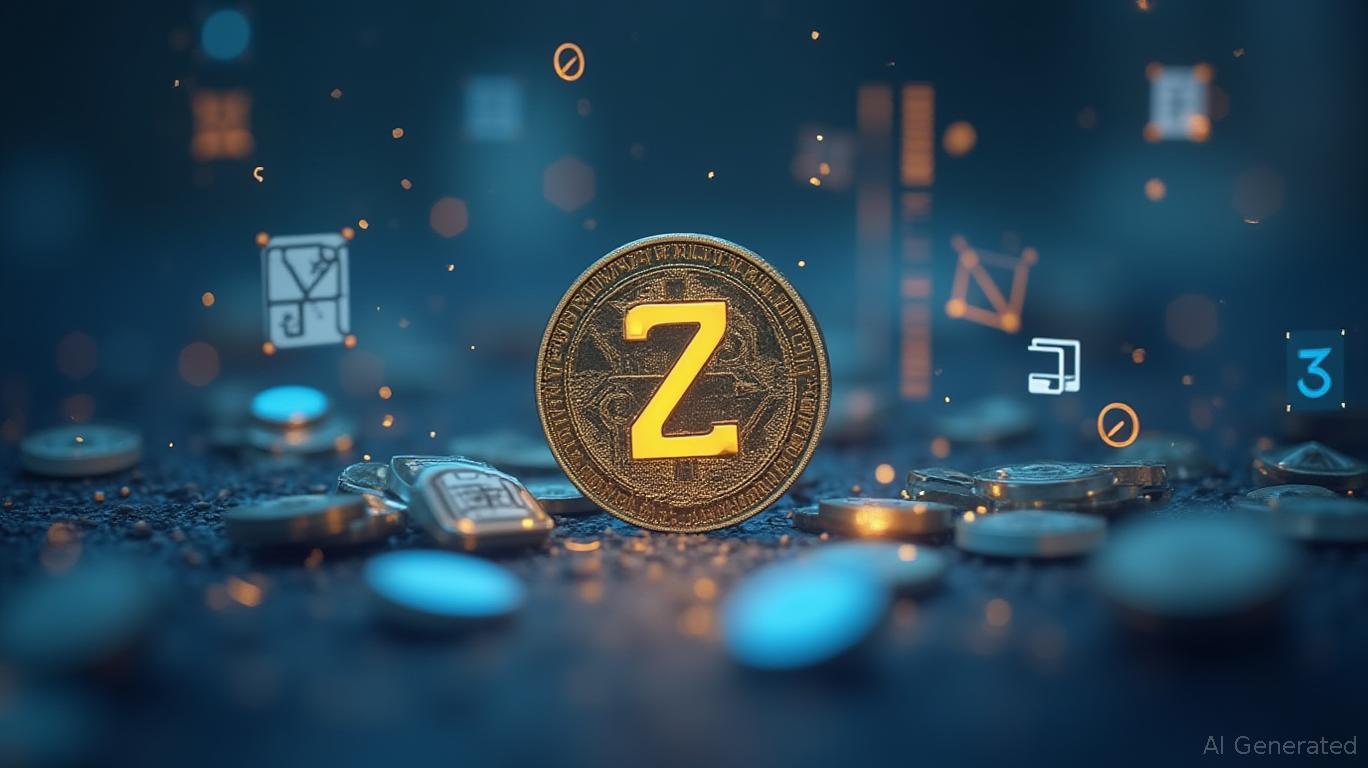Zelle Adopts Stablecoins to Address Challenges in Cross-Border Payments
- Zelle plans to expand international remittances using stablecoins, leveraging its $1T domestic transaction network and 150M users. - Backed by JPMorgan, Bank of America, and Wells Fargo, the move targets speed, cost, and compliance challenges in cross-border payments. - The initiative aligns with U.S. regulatory clarity post-GENIUS Act, positioning stablecoins as a bridge between traditional finance and blockchain. - Challenges include AML/KYC compliance and competition from PayPal, crypto-native stablec
Zelle, a peer-to-peer payment platform owned by U.S. banks, is preparing to enter the international remittance market by utilizing stablecoins—a step that could significantly alter the landscape of cross-border payments and pose new competition to established fintech companies. Early Warning Services, which operates Zelle, revealed plans to extend the network’s domestic achievements—processing more than $1 trillion annually and serving 150 million users—by delivering quicker and more affordable global money transfers, as reported by
This move is part of a growing trend in the financial sector toward stablecoins—digital assets tied to government-backed currencies like the U.S. dollar. These coins combine the dependability of fiat with the efficiency of blockchain technology and have gained more regulatory certainty in the U.S. since the GENIUS Act was enacted in July 2025, as noted by

Industry analysts believe Zelle’s timing and strategy are advantageous. Payments expert Aaron McPherson remarked that Zelle’s partnership with major banks allows it to avoid the disjointed approaches of single institutions. "This is best accomplished through collective effort, not by individual banks," he explained, adding that stablecoins’ regulatory acceptance and instant settlement features make them well-suited for international payments, as reported by Digital Transactions. With a network linking 2,300 U.S. banks and credit unions, Zelle could speed up stablecoin adoption by embedding them into existing digital banking platforms, a point raised by American Banker.
Nonetheless, there are hurdles to overcome. Ensuring compliance with anti-money laundering (AML) and know-your-customer (KYC) rules will demand strong systems, especially as Zelle deals with different regulations worldwide. Tony DeSanctis from Cornerstone Advisors cautioned that non-bank entities like PayPal or crypto-based stablecoins such as USDC may also vie for users, particularly among businesses looking for proven alternatives, as mentioned by American Banker. Furthermore, while Zelle has
This development is part of a larger shift in the sector. Rivals like PayPal and Wise are also testing stablecoin-powered remittance solutions, and reports indicate Zelle has previously weighed launching its own stablecoin, as stated by
Early Warning Services has promised to share further information in the near future, including launch schedules and technical details. For now, the announcement marks a significant milestone for stablecoins, which have reached a $312 billion market capitalization and are increasingly seen as a link between conventional finance and blockchain technology, according to Crowdfund Insider.
Disclaimer: The content of this article solely reflects the author's opinion and does not represent the platform in any capacity. This article is not intended to serve as a reference for making investment decisions.
You may also like
BNB News Update: BNB's Token Burn Approach Fuels Worldwide Acceptance as Countries Adopt BNB for Central Bank Digital Currencies and National Reserves
- BNB Foundation executed its 33rd quarterly burn, destroying $1.208 billion in BNB to reduce supply and boost token value. - Kyrgyzstan launched a BNB Chain-based stablecoin (KGST) and CBDC, with Binance's CZ Zhao meeting President Zhaparov to advance adoption. - x402 protocol's BNB Chain expansion drove $810M market cap growth via gasless payments, while BNB surged 2.8% amid U.S.-China trade optimism. - Institutional adoption accelerated as Bhutan and Pakistan announced BNB-backed reserves, positioning t

Bitcoin Updates: Mt. Gox Delays Until 2026: Widespread Challenges in Cryptocurrency Reimbursements
- Mt. Gox's trustee delays creditor repayments to October 31, 2026, citing administrative, legal, and technical challenges in distributing $4B in BTC and fiat. - The extension aims to prevent market destabilization by avoiding BTC liquidation, aligning with industry trends in managing crypto bankruptcy assets. - 19,500 creditors received partial repayments, but unresolved claims persist due to documentation gaps and evolving regulatory hurdles. - Market stability was maintained post-announcement, though lo

Ethereum Updates: Haust Network Connects Ethereum to DeFi, Enhancing Access with Mainnet Debut
- Haust Network launches Ethereum-compatible mainnet with AggLayer integration, completing its three-stage roadmap's first phase. - Platform introduces cross-chain wallet, real-time oracle, and passwordless account recovery via Account Abstraction to simplify DeFi access. - $HAUST token now tradeable on Uniswap and Haust's DEX, with Phase 2 planning AI-powered tools and DAO governance expansion. - Network aims to bridge Ethereum's infrastructure with gas-efficient solutions, aligning with DeFi's $1T+ month

Canada's Approach to Stablecoins: Navigating Innovation and Strict Regulation
- Canada accelerates stablecoin regulations to balance innovation with consumer protection, aligning with global digital asset trends. - Growing data center investments in Toronto/Montreal (140+ facilities by 2024) create infrastructure for stablecoin ecosystems. - Zelle explores stablecoins for cross-border payments while Binance dominates 67% of global stablecoin liquidity through Asia expansion. - Regulatory focus includes AI-driven AML monitoring and risk mitigation for volatility, transparency, and co
